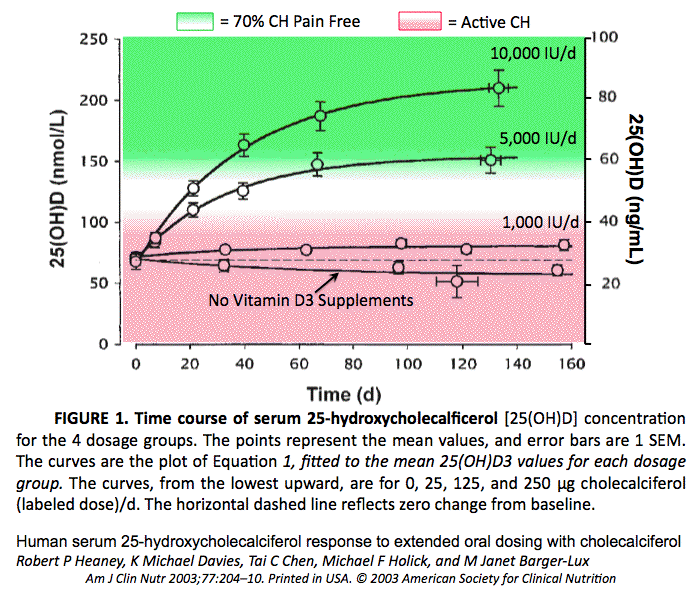A recent study by Garland, Heaney, et. al. titled: “Vitamin D Supplement Doses and Serum 25-Hydroxyvitamin D in the Range Associated with Cancer Prevention“ is based on the GrassRootsHealth D*action Project data. It provides further proof that long term use of vitamin D3 at doses as high as 10,000 IU/day are very safe. This study further concludes that: “Universal intake of up to 40,000 IU vitamin D per day is unlikely to result in vitamin D toxicity.”
- In the study, 104 out of the 140 cluster headache patients (both episodic and chronic), who tried this regimen over 12 months had a significant reduction in the frequency and severity of their CH and better than 90% of them have gone pain free. Typical response times to this regimen range from two days to three full weeks with the majority occurring by the end of the second week.

- The typical/average response to this regimen in terms of 25(OH)D concentration is illustrated in the following chart developed by Dr. Robert Heaney, M.D. I’ve overlaid his chart with color bands that represent 25(OH)D data and cluster headache response collected from cluster headache patients here at The Cluster Headache Support Group.
- There have been a handful of cluster headache patients who took over a month to respond to this regimen and several clinical studies have shown it can take upwards of three months to elevate 25(OH)D levels from 20 ng/mL to 60 ng/mL, (50 to 150 nmol/L) at a vitamin D3 dose of 10,000 IU/day. Moreover, chronic cluster headache patients who stop taking this regimen after going pain free for an extended period of use greater than six months, may experience a relapse with a resumption of cluster headache attacks in as little as a week.
